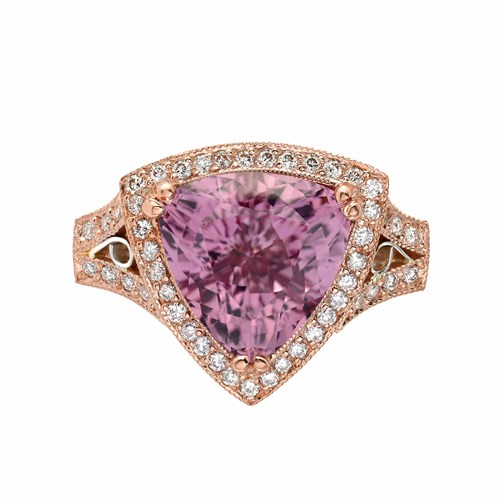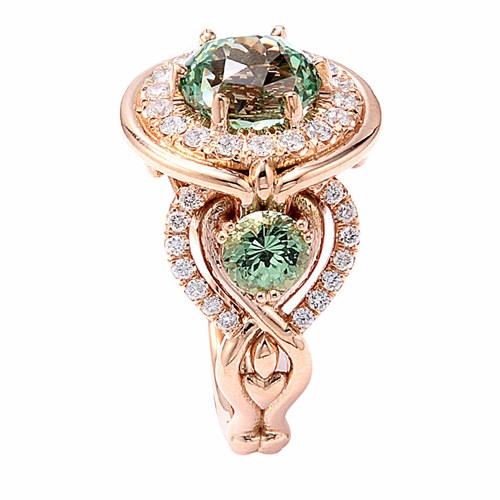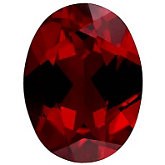Blog
January’s Birthstone: Garnet
By Maury Kauffman
1/11/2021 at 11:21 AM

As Tucson’s number one jeweler for diamond engagement rings and gemstone jewelry, I can create and customize rings and bracelets in gold and platinum. My jewelry store has hundreds of designs to meet every taste, style and budget. You can view some of them here or make an appointment to see all of them here. I specialize in color gemstone jewelry and will now start a year-long series on birthstones.
Did you know, January’s birthstone Garnet traces its roots to the Nile Delta in 3100 BC, where Egyptian artisans crafted the gemstone into beads or laid them into hand-wrought jewelry. This gem, whose name is derived from the Greek “granatum,” reminded the ancients of the ruby pearls of the pomegranate. In centuries past, garnets were thought to light up the night and offer protection from nightmares. Travelers carried garnet to protect against misfortune when far from home. Today, garnet is beloved around the world not only for its fiery colors, but for brilliance that spans the entire color spectrum.

Garnet is found in almost corner of the Earth, and its special color variations are region-specific. Red garnet remains the most abundant and well-known type of this gemstone. The oranges and browns of spessartite and hessonite hail from Namibia and Sri Lanka.
The vibrant lime-green demantoid, discovered in Russia’s Ural Mountains during the nineteenth century, is a highly-desired prize of estate jewelry. Although a trickle of demantoid is being mined today, demand for its brilliance, high dispersion, and pure green color far exceeds supply.
Tsavorite is a grass-green grossular garnet mined in East Africa. Tsavorite, like demantoid, commands thousands of dollars per carat, and is rarely found larger than four carats. And like all beautiful garnets, it is worth a search to find a fine example.
For millennia, garnet has been cherished for its fierce red hues, but only in the nineteenth century was garnet’s broad spectrum discovered and appreciated.
From the rich raspberry tones of rhodolite; the deep purple of grape garnet; the lime shades of tsavorite and demantoid; even the sea blues of Madagascar, there is no limit to garnet’s allure. There are garnets that change color in different light, translucent green garnets that resemble jade, garnets with stars, garnets that have been mined for thousands of years and garnets that were just discovered in the last decade.

Garnets are most commonly found in round, oval, and cushion cuts. Availability varies and depends mostly on variety; tsavorite is very difficult to find in sizes above a carat or two, while rhodolite garnet is available in larger sizes. All garnets are brilliant, durable, and available in a broad price range, making it an excellent choice for nearly every taste.
With a hardness of 6.5-7.5, garnet is generally easy to care for. For safe cleaning, wash garnet jewelry in a solution of mild dish soap and warm water, using a soft brush to scrub behind the stone where dust can collect. Take care not to leave the gemstone longer than overnight, and avoid submerging beads, cloth, or cord. To clean strands of beads, wipe them with a wet cloth after each wear. Like all fine jewelry, garnet should be removed before sleeping.

Remember, when you're shopping Tucson jewelers for color gemstone jewelry or engagement rings or bridal jewelry, please keep me in mind and view my two minute video. The Secret: Why Guys Buy Diamonds from MKPJ. And you can learn about my pricing and process.